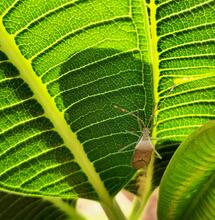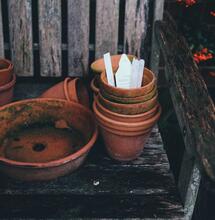Talking About the Old School with Jouke Piepenbrink

Over the last few decades we have seen Cannabis genetics evolve into something unique. We cannot talk about the new school exotic varieties, without mentioning the old school Dutch strains, so I sat down with Jouke from Seed Stockers to talk about genetics and get his views and advice.
Can you tell the readers about yourself, and how long you have been in the cannabis industry?
My name is Jouke Piepenbrink, I grew up in the Netherlands and have been working professionally in cannabis seeds since 2011. I have been a hobby grower since long before, and I have never skipped a season since I started. I have traveled a lot to Barcelona since around 2004 and lived some years there as well. Holland and Barcelona are both my home, and I know both cannabis scenes very well. After working a lot of years for Dutch Passion, I started my own seed company, Seedstockers.
In 2017, we have been developing a lot of unique strains that are on the market under the label Seedstockers Superior. Some of the best-performing and cup-winning strains from our own breeding projects are Panty Punch, Mack & Crack, and Zmäkdaun. I love cannabis, and I love the cannabis Industry. It is a blessing to be professionally active in the field of my personal passion and work together with a lot of people—colleagues, customers, suppliers and even competitors—who do what they love just like me. It is a blessing to be part of the cannabis community, which is making big progress year after year.
What was the cannabis scene like in Holland during the 1990’s onwards?
I grew up in the 90's, which was a time when cannabis was a rather normalized part of society. In the same era, The Netherlands was the first country in the world to legalize gay marriage and prostitution. It was very liberal and the wind was blowing, and the Dutch people had the feeling they were creating the society of the future with lots of individual freedom! Cuttings, seedlings and seeds were openly being sold by small grow shops, and it was very common to grow some cannabis plants in the garden at home.
Which were the most popular Dutch strains back then, and how would you describe them?
The coffee shop where me and my buddies used to go (Anytime in Alkmaar) had Northern Lights Special and Orange Bud on their menu as their specials. The NL Special is not to be found anymore, and the currently available Orange Buds are nothing like the ones from the old days. Also, we smoked a lot of hash; we always looked for the soft, dark types which had a very deep, kushy flavour, we ended up choosing types such as Charas or other hand-rolled types of hashish.
What were your personal favorite Dutch strains to grow and smoke and why?
Because I’m mostly an outdoor grower, I tried many outdoor strains, such as Durban Poison, Frisian Dew and Purple. Of those, Durban Poison is the one I grew repeatedly because it yielded a lot and was mold-resistant. The others were good as well, but not potent enough. As soon as I discovered autoflowers I cultivated all the autoflowers I could get my hands on.
Lowryder and other autos early on the market were small and not productive at all so I had to grow large numbers of plants. The fact that I could harvest them in the middle of summer instead of in the rainy autumn increased the quality of Dutch grown outdoor weed a lot. The first autoflowers with relatively high yields were Auto Mazar, Auto Northern Lights and Auto Wappa.

How popular were the haze varieties, and what are your experiences with the Dutch Hazes?
The Dutch Hazes have helped to increase yield and potency. All the big genetics developers, such as Sensi, Greenhouse and Dutch Passion, have worked a lot with those strains and bred them in many lines, which has helped genetics become more potent and productive.
How impactful was Neville Schoenmakers as a breeder and pioneer back then?
Neville has had an enormous impact, on par with Sam the Skunkman, he brought new genetics to Europe. Sativa where unheard of before these 2 guys came to the scene and the good thing about there Sativa was that those had been stabilized and adapted to indoor growing already instead of sativa bag seeds from important South American weed which could not really been grown in our outdoor climate and had flower times too long for any serious indoor grower.
How different is the coffee shop culture in Holland compared to social clubs in Barcelona?
In Barcelona that is different, the Social Club owners are from another generation, have a lot of knowledge and passion for their products and often choose to work with small growers who have a passion for the product. Therefore, I would say that generally, the quality of the products in the Barcelona clubs is much higher nowadays. The clubs themselves are often very nicely equipped, with large seating areas and a big variety of drinks and snacks on the menu aside from their cannabis offerings.
What are your thoughts on modern day strains, and how do they differ from Dutch genetics?
There are many more strains on the market than there have ever been, just our seed company offers over 70 strains, and other seed companies offer similar catalogues. Those genetics are the interesting ones, and I think it is great that so many breeders are trying to add something to the gene pool. I love it that our world is kind of open source.
If someone brings an existing new strain to the market, another breeder will use those genetics to make something new again. In the end I think we can say that nowadays genetics on the market are an achievement of our community and many people have helped to achieve them. I love that aspect of our business, genetics development, is ongoing and community driven.
What tips do you have for someone visiting Holland for the first time?
Skip Amsterdam! It is a great city, don’t get me wrong and definitely spend time there but then move on, the public train network in Holland is great compared to other countries, and you can buy premium flowers in cities like Then Hague, Rotterdam, Haarlem, Utrecht and Alkmaar which are all close to Amsterdam. If the weather is nice enough, visit the coast, have walks in the dunes and the beach and enjoy nature!
What are your top tips for a beginner growing outdoors in Northern Europe?
I love this question! Yes, there are some hugely important basics to keep in mind. Avoid “wet feet” meaning to provide drainage when growing in a container, and do not over water! Choose autos if you want to have more security in regard to quality, plant in May, harvest in August and enjoy sun bloomed flowers!
If you do want to grow photoperiods, choose strains which have been adapted to your climate such as Zmäkdaun and Big Yeti or work with darkening, if you use darkening you have to understand that skipping a day is not an option, be dedicated!
Accept you're working with nature, you will have free sunlight and therefore a very environmentally friendly product, but you might have some issues with snails or other bugs. See this as a fact of life, maybe plant some more plants than you need to harvest to cover for potential losses to mother nature.
Finally, Jouke, where can our readers find out more about you and your work?
Come to visit us at our booth at one of the many trade shows! For example, Mary Jane in Berlin, Cannafest in Prague or Spannabis in Barcelona. If that is not an option, you can also follow us on Instagram (@Seedstockers_seeds) or just send as an email: info@seedstockers.com. We love to hear from you!



.png)